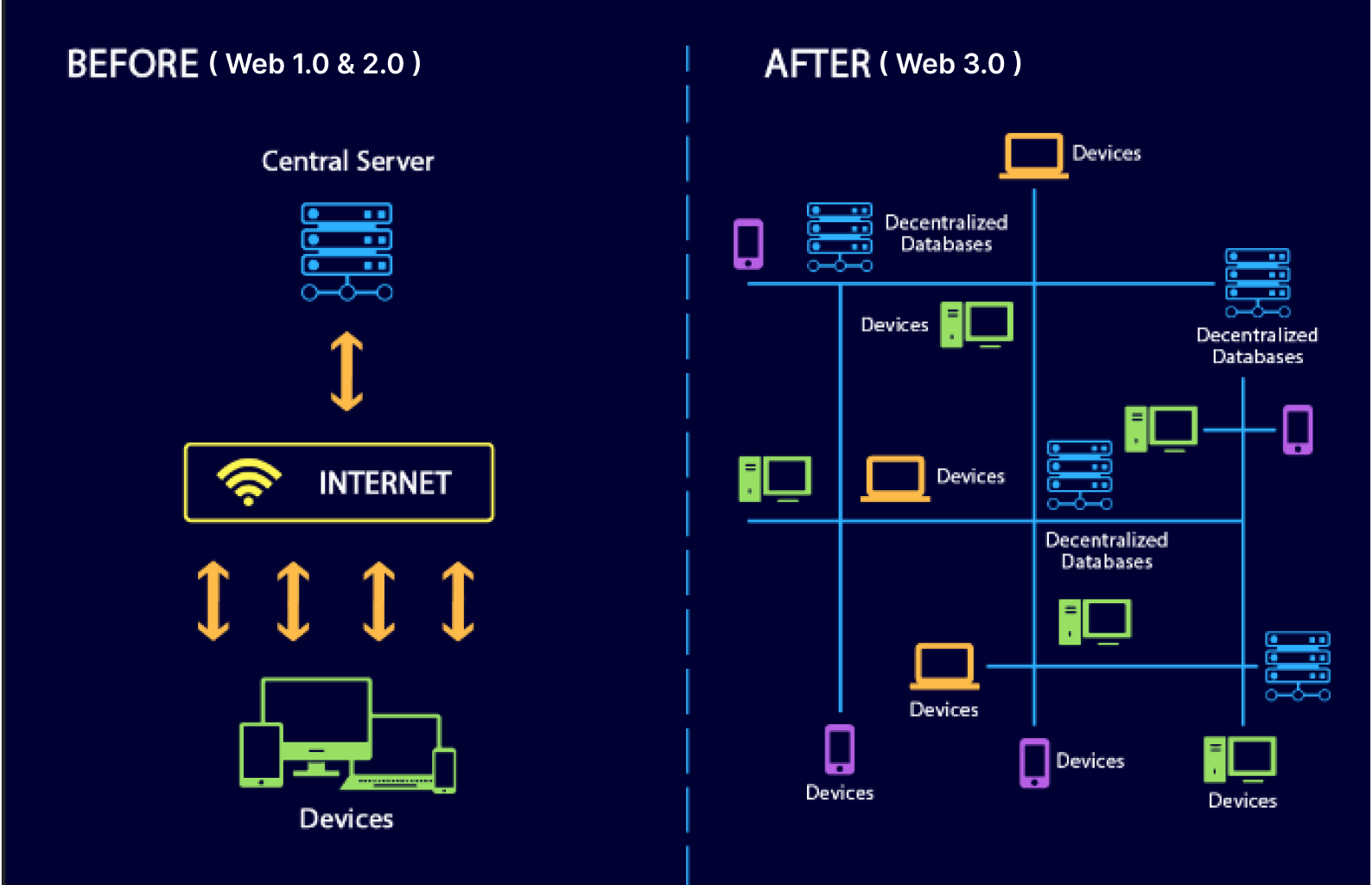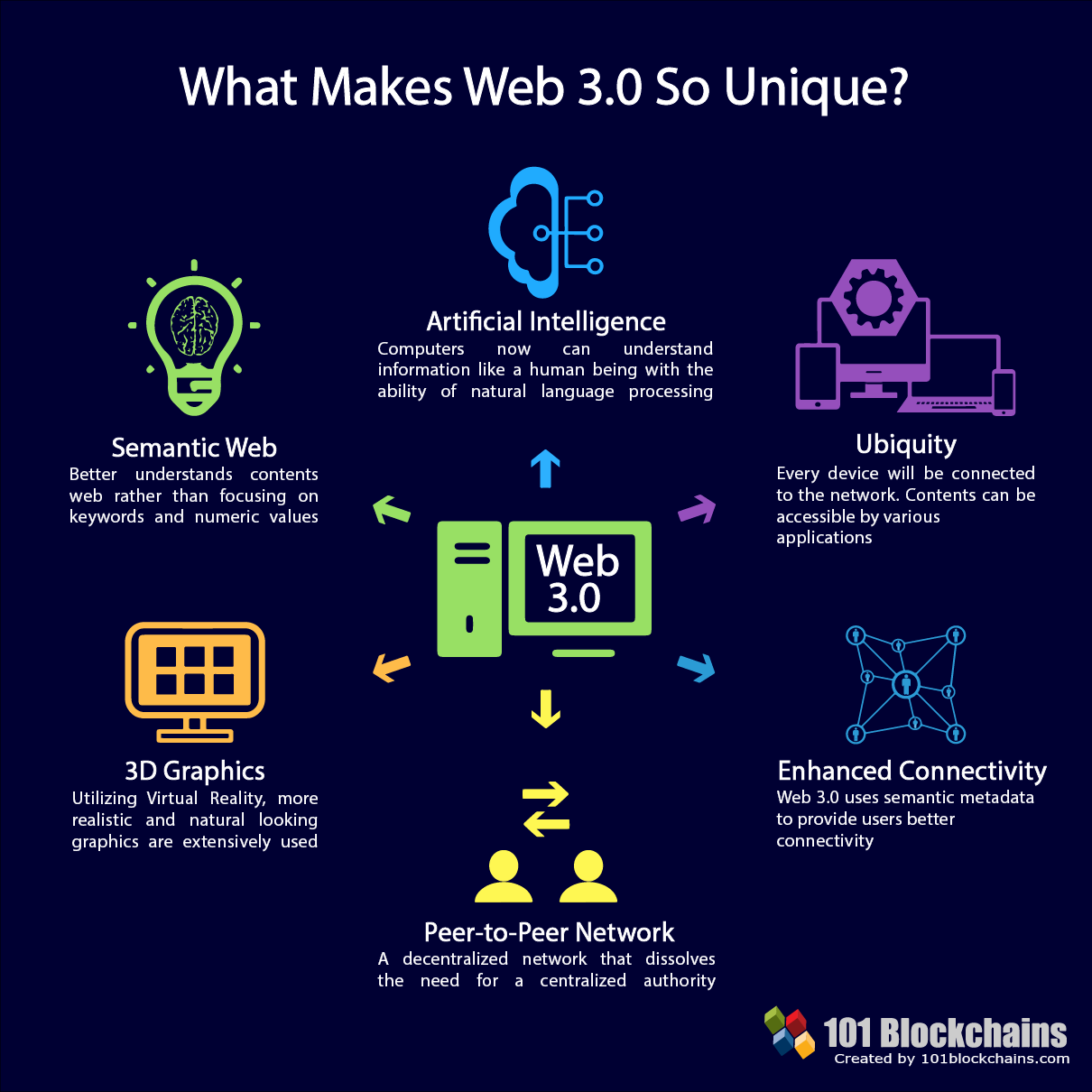What is Web 3.0?
Overview
The web —whose full name is the world wide web— is an information-sharing model that is built on top of the internet. The web is the primary tool used by billions of people to share, read, and write information in order to interact with other people via the internet. Hence, the web has opened up the internet to everyone.
It is great to know that we are in the right generation to keep up with and observe the tremendous impact that the web has on the world.
What is Web 3.0?
Web 3.0 is the third and present generation of the world wide web, which is also referred to as read-write-execute web or semantic web. The evolution of web 3.0 began in 2020 with the onset of dynamic applications, interactive services, and machine-to-machine interaction. With Web 3.0, computers can interpret information like humans, via machine learning and artificial intelligence. Machine learning and artificial intelligence help to intelligently generate and distribute useful content, tailored to a particular need of the user.
Web 3.0 is powered by four new layers of technological innovation, which include: blockchain, edge computing, decentralized data network and artificial intelligence.
The Web 3.0 system can be explained further as the interconnection of data in a decentralized way, which is a huge leap forward from the second generation of web evolution (Web 2.0).
Web 3.0 applications and websites are built on blockchain technology, which aims to create a level of transparency whereby smart contracts control user data and transactions, instead of a centralized organization. This enables a minimization of the trust that is required for coordination on a global scale.
The Web 3.0 system is more user specific, as it ensures data security and privacy while avoiding the risk of internet hacking. This comes as a result of its ability to take in large-scale data and break it down into credible information and precise executions for users.
Key features of Web 3.0
Defining the key features of web 3.0 include;
Semantic web
Based on the semantic web feature, Web 3.0 focuses on easy search. Semantics study the relationship between words. It enables machines to decode meaning and emotions by analyzing data.
Therefore, this feature of Web 3.0 aids in the definition and description of an item’s appearance, and the search for related items, based on their similar features.
Artificial intelligence
Web 3.0 is integrated with natural language processing to help computers understand human language and provide faster and better results. Therefore, this enables machines to decipher the meaning and emotions that are conveyed by a set of data. This is the key feature to intelligent computation.
Connectivity
This is another key feature of Web 3.0, which connects users to the internet and gives them access to a vast array of information. This feature makes room for enhanced data connectivity in the Web 3.0 system. Hence, it provides a better user experience and maximizes the usability of all the accessible information.
Ubiquity
The term ubiquity means having the capacity to be everywhere. Therefore, this feature of Web 3.0 makes it possible for the same content to be accessible while multiple applications are in use. This means that every service will be available over every device, and can be accessed from anywhere.
3D Graphics
Web 3.0 can also be referred to as a spatial web, as it aims to weave together the physical and virtual world by revolutionizing graphics technology in the form of immersive three-dimensional (3D) graphics. The 3D graphics feature of Web 3.0 brings about a new level of immersion into the virtual world, as it blurs the boundary between the physical and virtual worlds. Its applications can be seen in gaming, e-commerce, real estate, health, and many more areas.
The future of Web 3.0
Web 3.0 is a more fundamental disruption, and a leap forward to open trustless and permissionless networks. It facilitates a future where internet users and machines could interact with data, values, and other counterparties with the use of decentralized networks. Thus, no intermediaries will be needed. These interactions, which may range from seamless payments to richer and trusted information flows, will become possible with a vast increase of potential counter parties.
The future of Web 3.0 could enable easy access to universal applications and their usage by a large number of various devices and software types, thereby making it more convenient for businesses to operate.
The technological advancement of layers such as distributed ledgers and blockchain storage will enable the creation of a transparent and secure environments, the subversion of centralization, surveillance, and the exploitative advertising that is associated with Web 2.0.
Finally, with the use of blockchain technology, Web 3.0 holds the potential to revolutionize the internet world.
Conclusion
The internet has had a continuous and tremendous impact on our daily lives. As we move towards Web 3.0 and the technologies that support it, the internet will become more scalable and exponentially more integrated in our daily lives. The decentralized blockchain layer of the Web 3.0 system will allow users to connect to an internet where they can possess and secure their data. Therefore, this will provide a more personal and customized browsing experience and an equitable web.
RELATED TAGS
CONTRIBUTOR


